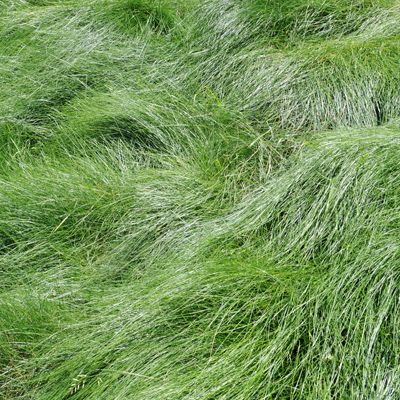Tall Fescue

Tall Fescue grows in clumps, is coarse-textured with wide blades, and can reach up to 6 ½’ high. Tall fescue is often misidentified as crabgrass, but they are very different grass types. As one of the most commonly used turfgrasses, tall fescue adapts well in many areas of the country, tolerates shade better than other cool-season grasses, and establishes easily from seed.
Tall Fescue Foliage:
Tall fescue leaves can be rolled, loosely rolled, or flat before budding. The blades of Tall Fescue grass are about 2/5” wide and 4” to 28” in length. The leaves are dark green, a bit glossy and coarse with spiky edges that radiate from a center clump. Tall Fescue grass grows in tighter clumps than dallisgrass and paspalum dilatatum although they are similar in appearance.
Tall Fescue Flowers:
Tall Fescue grass blooms between May and June. The stalked, purple-tinged spikelets connect along the flowering branches. The flower head stalks lay flat after mowing and this may produce ragged-looking turf.
Tall Fescue Roots:
Tall Fescue is a bunch-forming grass that produces short rhizomes with limited spreading capacity. It spreads mainly through “tillers” that are vertical shoots growing from the base of the grass plant. Due to this growth habit, Tall Fescue is easy to contain and keep from spreading to flower beds.
Treatment for Tall Fescue:
Since Tall Fescue grass is often confused with crabgrass, the first thing to do is identify the grass correctly because treatment methods are very different. A nonselective herbicide, for example glyphosate, can be applied to directly Tall Fescue clumps (since this herbicide also kills surrounding turf, be sure to use caution with applications).
Talk to an Adam’s Healthy Lawn Expert!
